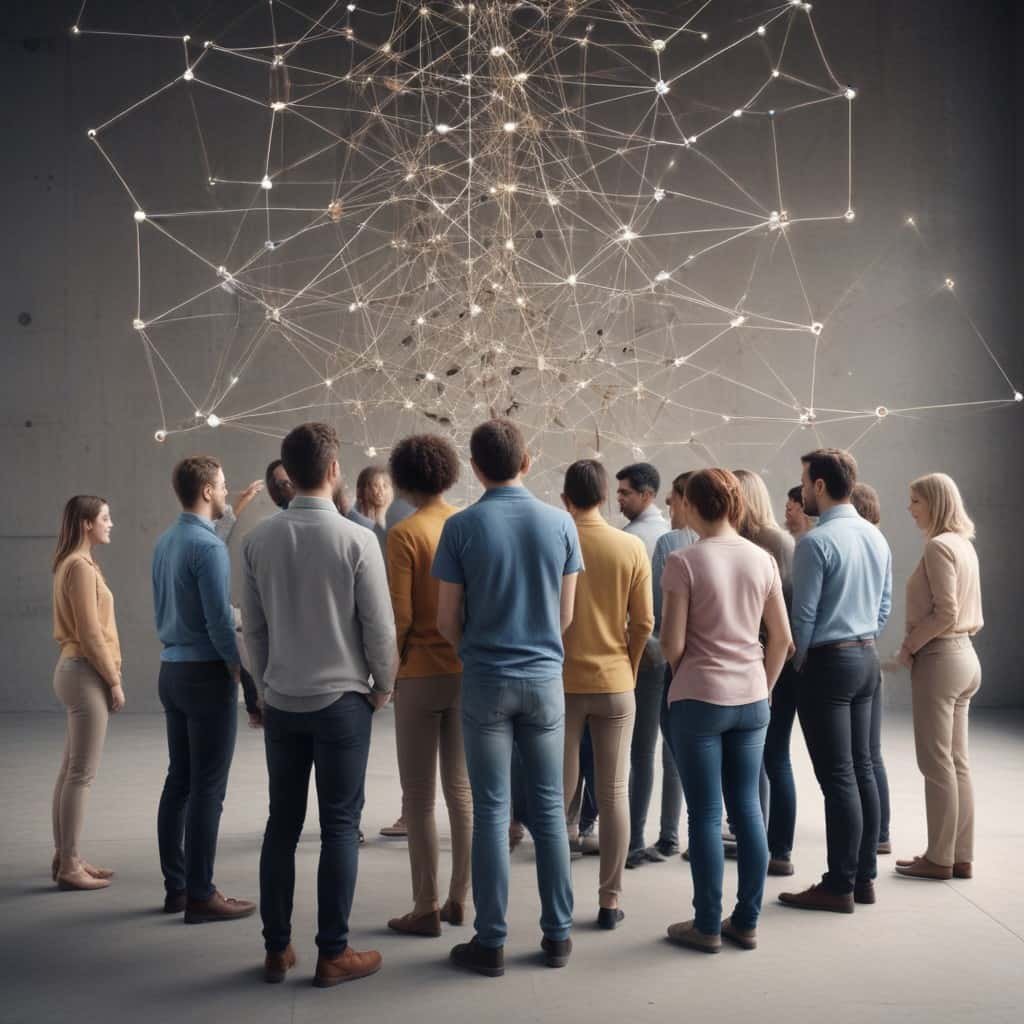Effective communication is the lifeblood of any successful endeavor, akin to the air we breathe for sustenance. In a world where diverse backgrounds and cultures converge, the ability to exchange ideas and understand one another is paramount. Without it, we would be akin to actors in a silent movie, unable to convey thoughts or comprehend those of others.
So, why is it so important? Well, think about it this way: when everyone can share their ideas and understand each other, magic happens! Diverse teams bring together different perspectives and experiences, which can lead to awesome solutions. But if there’s a communication breakdown, it’s like hitting a roadblock.
When people don’t understand each other, misunderstandings can happen. That’s when feelings get hurt, mistakes are made, and projects go off track. But fear not! Effective communication can save the day. By being clear, listening carefully, and respecting each other’s differences, diverse teams can achieve amazing things together.
In a nutshell, effective communication is the secret sauce that makes diverse teams thrive. It’s not always easy, but with practice and patience, anyone can become a communication superstar. So, next time you’re in a team, remember to speak up, listen up, and keep those communication channels wide open. Who knows what awesome things you’ll achieve together!
Key Takeaways
- Effective communication is essential: Communication is the lifeblood of any team, especially in diverse teams where understanding each other’s ideas is crucial for success.
- Recognize communication barriers: Cultural differences, language barriers, misinterpretation of non-verbal cues, stereotypes, and biases are common obstacles to effective communication in diverse teams.
- Cultural competence is key: Cultural competence involves understanding and respecting people from different backgrounds and seeing diversity as an opportunity for growth and connection rather than an obstacle.
- Strategies for overcoming barriers: Encouraging open communication, establishing clear communication protocols, promoting active listening and empathy, emphasizing respect for diversity, creating opportunities for team bonding, and celebrating cultural diversity and achievements are effective strategies for overcoming communication barriers in diverse teams.
- Foster an inclusive environment: Creating an inclusive environment where everyone feels heard, valued, and respected is essential for effective communication and team success.
Understanding Communication Barriers in Diverse Teams:
Communication is like a dance, and in diverse teams, it’s like dancing with people from different parts of the world. Sometimes, you step on each other’s toes without even realizing it! Let’s take a closer look at some of the barriers that can get in the way of smooth communication in diverse teams.
| Communication Challenge | Description |
| Cultural Differences | People from different cultures may have varying communication styles, such as directness vs. indirectness, leading to confusion and misunderstandings when these styles clash. |
| Language Barriers | Communication difficulties arise when team members speak different languages or dialects, which can hinder effective message transmission due to accents, slang, or varying levels of fluency. |
| Misinterpretation of Non-Verbal Cues | Non-verbal cues such as gestures, facial expressions, and body language may be interpreted differently across cultures, leading to confusion or miscommunication about the intended message. |
| Stereotypes and Biases | Preconceived notions and biases based on cultural backgrounds can distort communication, leading to unfair treatment, discrimination, and barriers to effective understanding and collaboration. |
Importance of Cultural Competence
Imagine a world where everyone understands and respects each other’s differences like pieces of a beautiful mosaic coming together. That’s the power of cultural competence! In this article, we’ll explore what cultural competence is, why it’s super important, and how it can make diverse teams thrive.
Definition of Cultural Competence
Okay, let’s break it down. Cultural competence is like having a superpower that lets you understand and appreciate people from different backgrounds and cultures. It’s about being open-minded, curious, and respectful towards others’ customs, beliefs, and ways of doing things. Instead of seeing differences as obstacles, cultural competence sees them as opportunities for growth and connection.
Benefits of Cultural Competence in Diverse Teams
Imagine you’re making a delicious stew. Each ingredient brings its flavor to the pot, making the stew even tastier. That’s what cultural competence does in diverse teams! When team members understand and respect each other’s cultures, it creates a rich blend of perspectives, ideas, and experiences. This diversity fuels creativity, innovation, and problem-solving. Plus, it makes the team stronger and more united.
Strategies for Overcoming Communication Barriers
Communication barriers can sometimes feel like roadblocks on the path to success, but fear not! With the right strategies, we can knock down those barriers and keep the conversation flowing smoothly. Let’s explore five effective ways to overcome communication obstacles in diverse teams.
Encouraging Open Communication
Imagine a garden where flowers bloom freely, sharing their beauty with the world. That’s what open communication is like in a team—it allows ideas to blossom and grow. Encouraging team members to speak up, ask questions, and share their thoughts creates an environment of trust and collaboration. When everyone feels heard and valued, communication barriers start to crumble.
Establishing Clear Communication Protocols
Communication is like a recipe—it works best when everyone follows the same steps. That’s why establishing clear communication protocols is essential in diverse teams. From setting expectations for how and when to communicate to defining roles and responsibilities, having clear guidelines keeps everyone on the same page. When there’s no confusion about who’s doing what and how, communication flows more smoothly.
Promoting Active Listening and Empathy
Imagine having a conversation where you’re truly heard and understood, like a warm hug for your ears. That’s the power of active listening and empathy. Encouraging team members to listen with their hearts as well as their ears creates deeper connections and mutual understanding. When we put ourselves in others’ shoes and listen to what they’re saying, communication barriers melt away
Emphasizing Respect and Appreciation for Diversity:
Imagine a garden where every flower is unique and beautiful in its own way. That’s what diversity is like in a team—it adds color and richness to the collective experience. By emphasizing respect and appreciation for each team member’s background, culture, and perspective, we create a culture of inclusivity where everyone’s contributions are celebrated.
Creating Opportunities for Team Bonding and Relationship-Building
Imagine sitting around a campfire, sharing stories and laughter with friends. That’s the kind of bond we want to foster in our teams! Creating opportunities for team bonding and relationship-building helps break down barriers and strengthens connections. Whether it’s through team-building activities, social events, or simply sharing a meal together, these moments of camaraderie build trust and solidarity.
Celebrating Cultural Diversity and Achievements
Imagine a garden party where every flower gets its moment to shine. That’s what celebrating cultural diversity and achievements is like in a team—it’s a joyful celebration of what makes each person unique. Whether it’s through cultural heritage months, diversity events, or simply acknowledging and celebrating individual accomplishments, recognizing and honoring diversity fosters a sense of belonging and pride.
FAQS
- What is the difference between diversity and inclusion?
- Diversity encompasses differences like race, gender, and abilities in a group. Inclusion is about ensuring everyone feels valued, and respected, and has equal opportunities. Diversity focuses on representation, while inclusion ensures all voices are heard and valued.
- How can I promote diversity and inclusion in my workplace?
- Promoting diversity and inclusion in the workplace requires both organizational policies and individual efforts. Strategies include inclusive hiring, diversity training, open communication, employee resource groups, mentorship, addressing biases, and fostering a culture of respect and belonging for all.
Conclusion
In conclusion, fostering an inclusive environment in diverse teams isn’t just a nice-to-have—it’s a must-have for success. By embracing diversity, practicing empathy, and creating a culture of respect and inclusion, teams can unlock their full potential and achieve incredible results together. From emphasizing respect and appreciation for diversity to celebrating cultural achievements, every action we take to nurture inclusivity contributes to a stronger, more cohesive team. So let’s continue to water the seeds of inclusivity, tend to our team garden with care, and watch it flourish with unity, belonging, and boundless possibilities. Together, we can create a world where everyone feels valued, respected, and empowered to shine.



